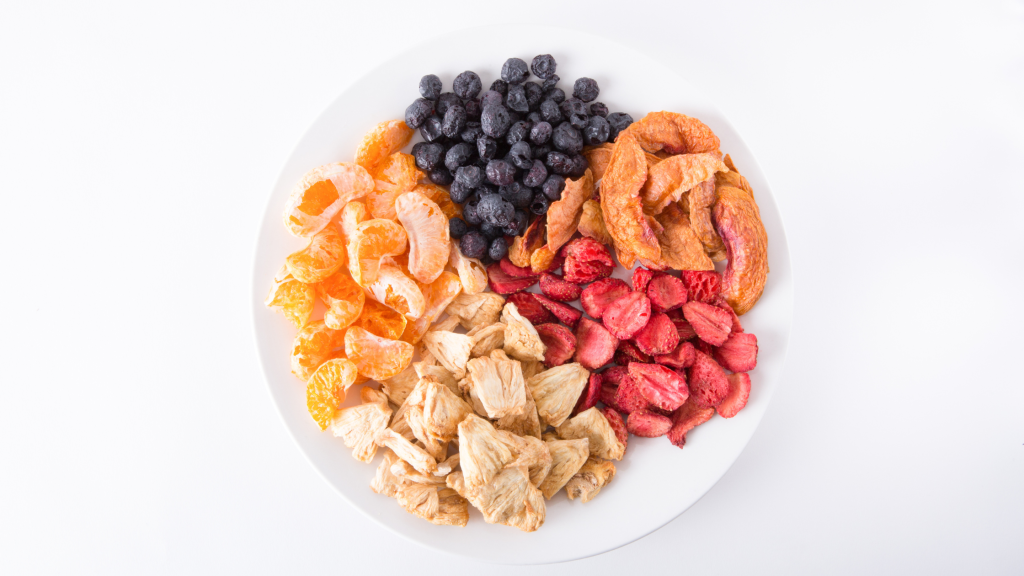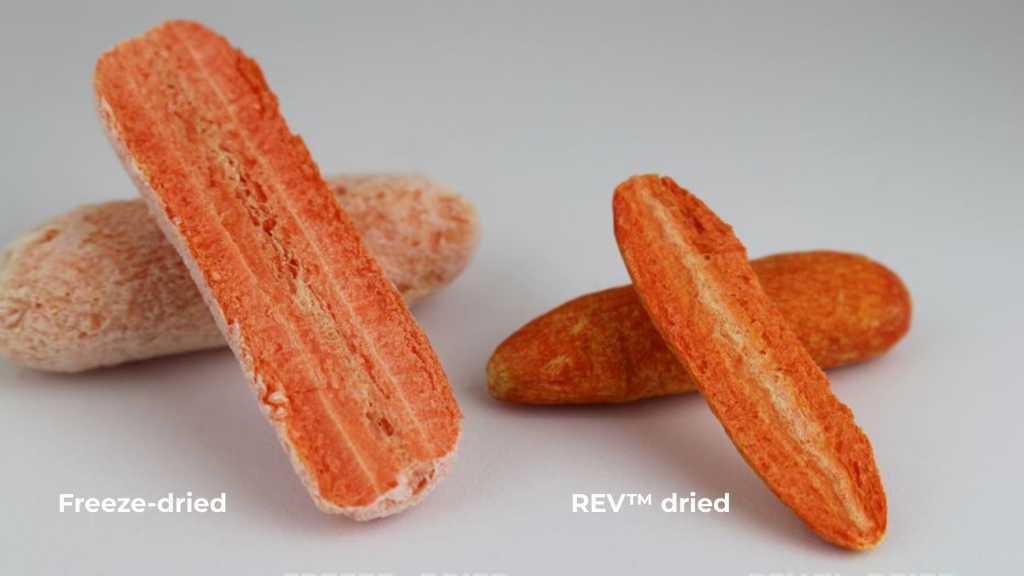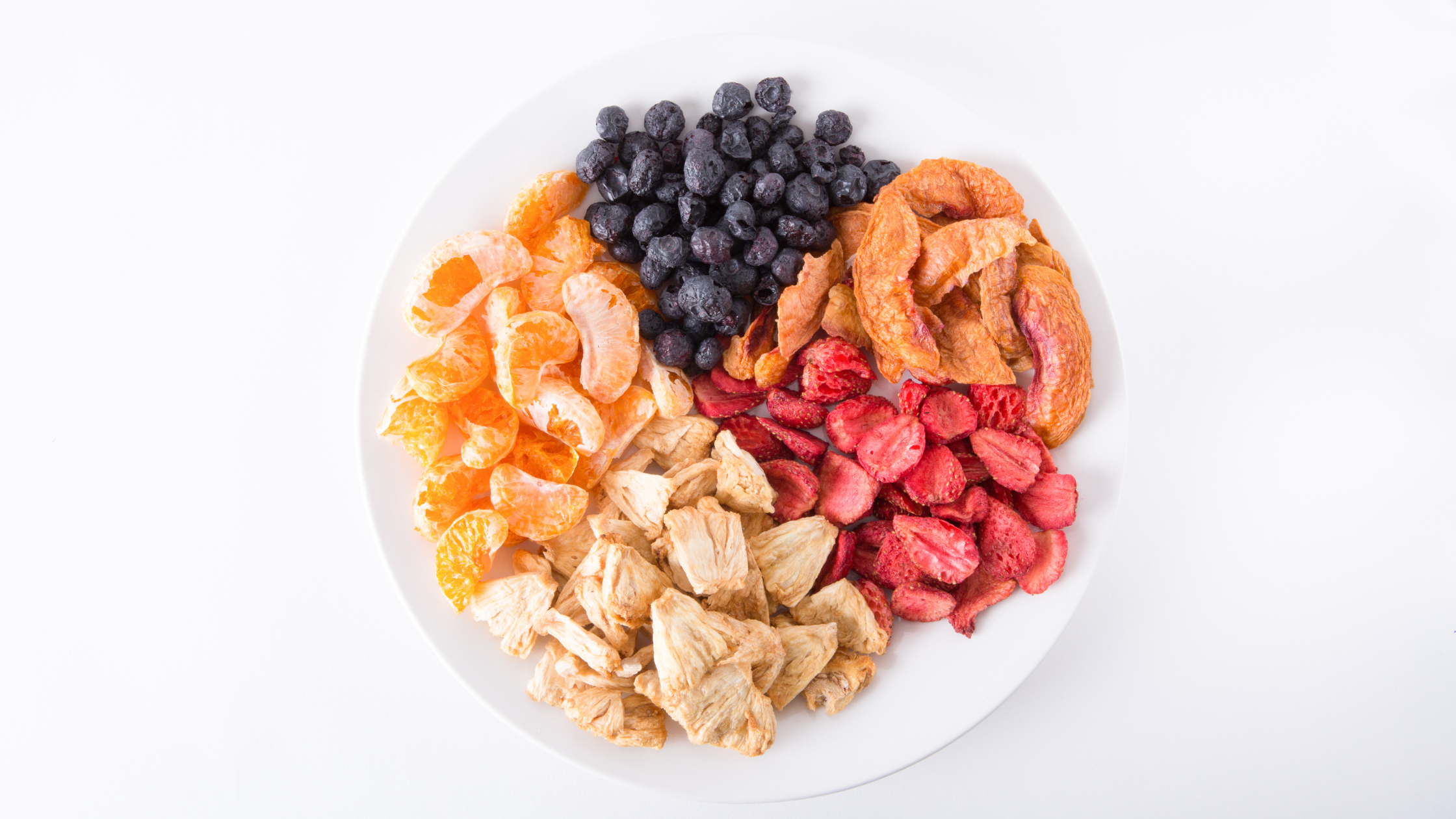Why do some freeze-dried foods taste better than others?
Freeze-dried foods have become a staple in commercial food drying, food innovation, and product development. From vibrant dried fruit snacks to ready-to-eat meals, freeze drying is celebrated for its ability to preserve color, nutrients, and (ideally) flavor. Yet, anyone in food processing knows not all freeze-dried products are created equal. Some taste fresh and delicious, while others fall flat, tasting bland or off-putting. What causes such a dramatic difference in taste outcomes? The answer lies in the interplay of raw ingredients, process control, and storage.

The role of raw ingredients in freeze-dried flavor
The journey to great-tasting freeze-dried food begins long before it enters a commercial freeze dry machine or industrial freeze dryer. The quality, variety, and ripeness of the raw ingredients set the stage for the final product’s taste.
- Variety and ripeness: Fruits and vegetables selected at peak ripeness and of the right variety tend to yield the best flavor after freeze drying. High-sugar fruits like berries and tropical varieties retain more of their original flavor, while produce with subtle notes or high water content can taste muted post-drying.
- Pre-Treatment: Washing, slicing, and even brief blanching can impact flavor retention. Any pre-treatment that damages cell walls or removes natural sugars can diminish the flavor intensity of the final product.
- Ingredient integrity: Using high-quality, fresh ingredients is crucial. Inferior or overripe produce can result in off-flavors that become concentrated during the drying process.
Process control
Freeze drying is a complex process that involves freezing food, then removing water by sublimation under vacuum. The way this process is managed has a profound effect on taste, texture, and aroma.
- Freezing rate: Rapid freezing helps preserve the cellular structure and volatile flavor compounds, while slow freezing can cause ice crystals to rupture cell walls, leading to flavor loss.
- Drying parameters: Shelf temperature, vacuum pressure, and drying time must be precisely controlled. Too high a temperature or too long in the dryer can degrade sensitive flavor molecules, while too low can leave the product under-dried, impacting taste and shelf life.
- Porosity and texture: The structure of freeze-dried food is highly porous, which can enhance the release of flavors in the mouth. However, if the process collapses this structure, the result can be dense, chewy, and less flavorful products.
Modern commercial freeze dryers and industrial freeze machines offer advanced controls for adjusting these parameters, allowing food tech innovators to tailor the process for each product and ingredient.
Protecting flavor after drying
Even perfectly freeze-dried foods can lose their appeal if not stored correctly. Oxygen, moisture, and light are the main culprits in flavor degradation.
- Oxygen exposure: Oxygen can oxidize fats and degrade flavor compounds, leading to stale or rancid notes. Packaging that excludes air, such as vacuum-sealed mylar bags, is essential for preserving taste.
- Moisture control: Freeze-dried foods are hygroscopic, they absorb moisture quickly. If not kept dry, they can become soggy and lose their crisp texture, which also dulls the flavor.
- Temperature and light: Cool, dark storage environments slow down the breakdown of flavor compounds, ensuring the product tastes fresh for years.
Why some freeze-dried foods taste better than others?
When all these factors align: top-quality ingredients, precise process control, and optimal storage, the result is a freeze-dried food that tastes remarkably close to its fresh counterpart. The flavor is often described as more concentrated, with a sweet, tangy, or intense profile that delights consumers. The crisp texture can also enhance the sensory experience, making dried fruit snacks and other products a favorite in food innovation circles.
On the other hand, poor ingredient selection, imprecise drying, or inadequate storage can lead to disappointing results: bland, off-flavored, or stale-tasting foods. This is why not all commercial freeze drying or industrial freeze dryer operations deliver the same quality.

A new standard for flavor and quality
While freeze drying has long been the gold standard for preserving taste, new drying technology is pushing the boundaries of what’s possible in food dehydration. Microwave drying equipment, especially when combined with vacuum technology, offers several advantages:
- Faster processing: Microwave drying dramatically reduces drying times, minimizing the exposure of food to conditions that degrade flavor.
- Gentle on ingredients: Lower temperatures and shorter cycles help preserve delicate flavor compounds and nutrients.
- Enhanced control: Advanced moisture and temperature control allow for consistent, high-quality results batch after batch.
Companies like EnWave have pioneered these solutions, helping food processors achieve superior taste outcomes while improving efficiency and sustainability. Microwave drying is quickly becoming a preferred choice for those seeking an edge in commercial food drying and product development.
Best Practices for great-tasting freeze-dried foods
To consistently deliver freeze-dried foods that taste amazing, food processors and innovators should focus on:
- Sourcing high-quality, ripe ingredients tailored to the end product
- Using advanced freeze drying or microwave drying equipment with precise process controls
- Implementing rigorous storage protocols to protect flavor, texture, and nutritional value
As consumer expectations for taste and quality rise, the companies that invest in better technology and process management will stand out in the crowded world of dried foods.
Ready to Elevate Your Product’s Taste?
If you’re looking to improve the flavor and quality of your freeze-dried or dehydrated foods, consider how advanced drying technology can make a difference. Explore the possibilities with microwave drying equipment and learn how EnWave’s solutions can help you lead in food innovation and commercial food drying.
For more insights and technology solutions, explore enwave.net or contact us.
Further Reading:
- How Does Freeze Drying Affect The Flavor Of Fruit?
- The Freeze-Drying of Foods—The Characteristic of the Process
- Why Freeze-Dried Food Retains Taste and Nutrition
- The Freeze Drying Process – Be Prepared
- Freeze-drying food – University of Minnesota Extension
- The Pros and Cons of Freeze Drying Foods – Gubba Homestead


